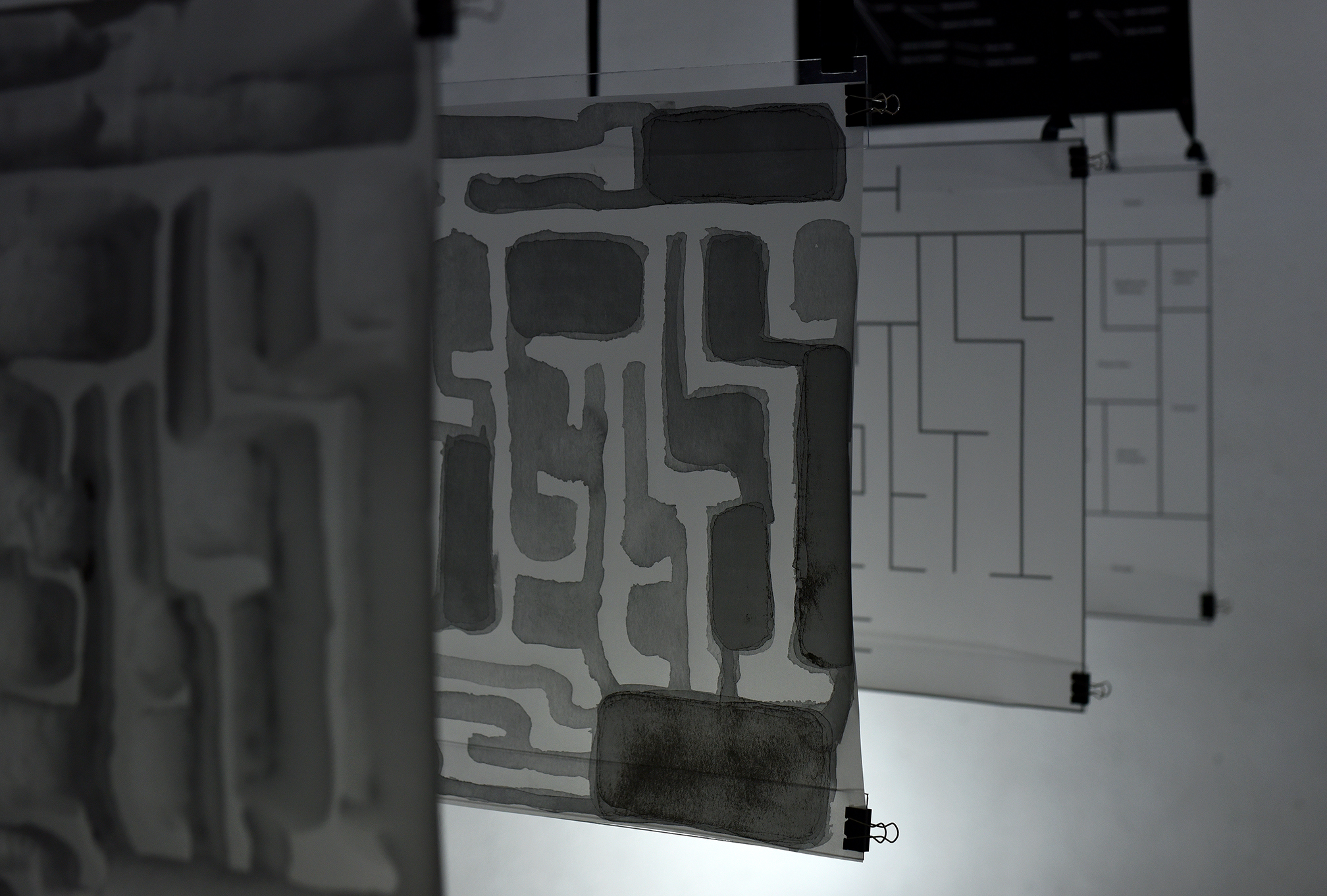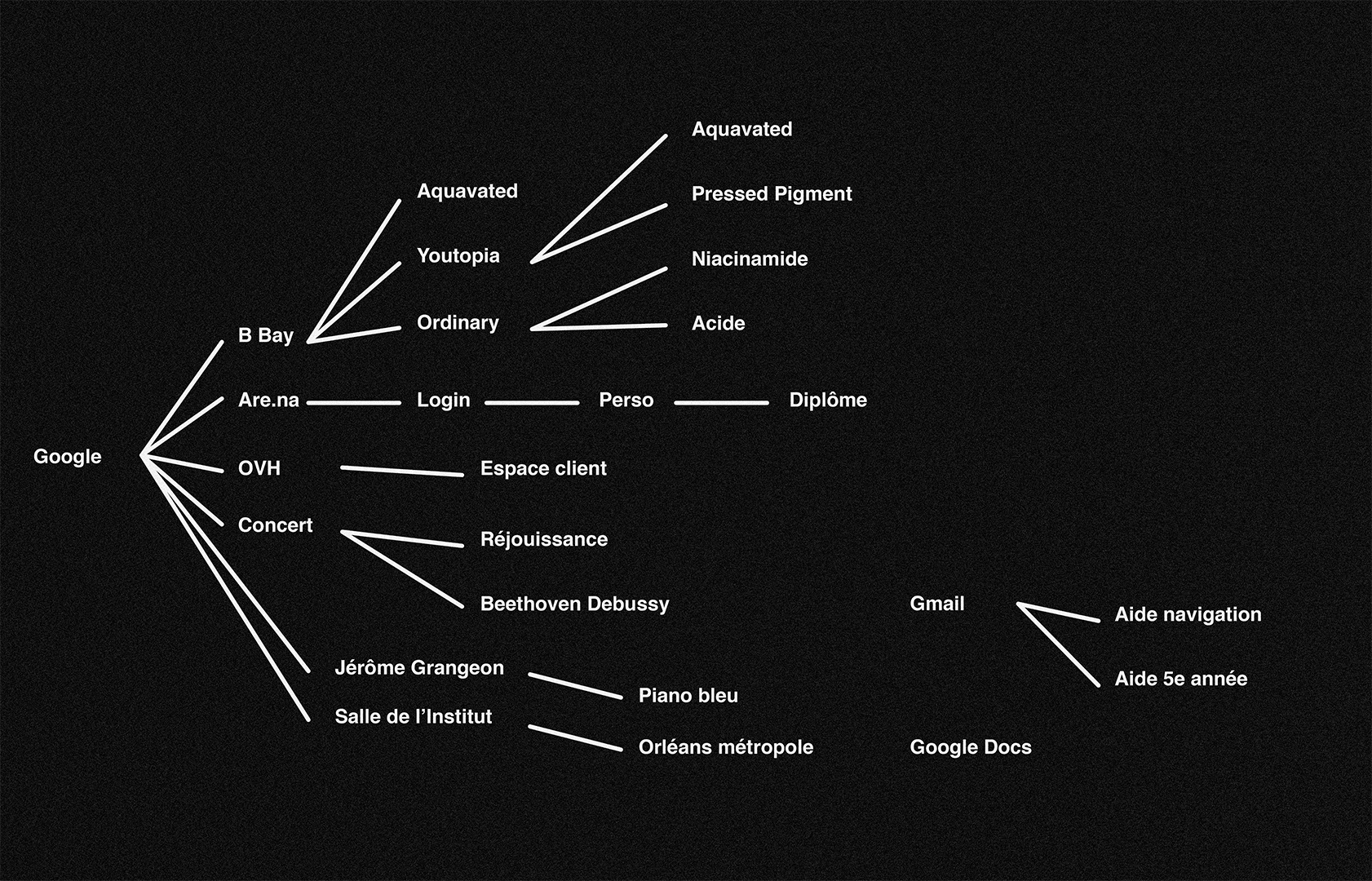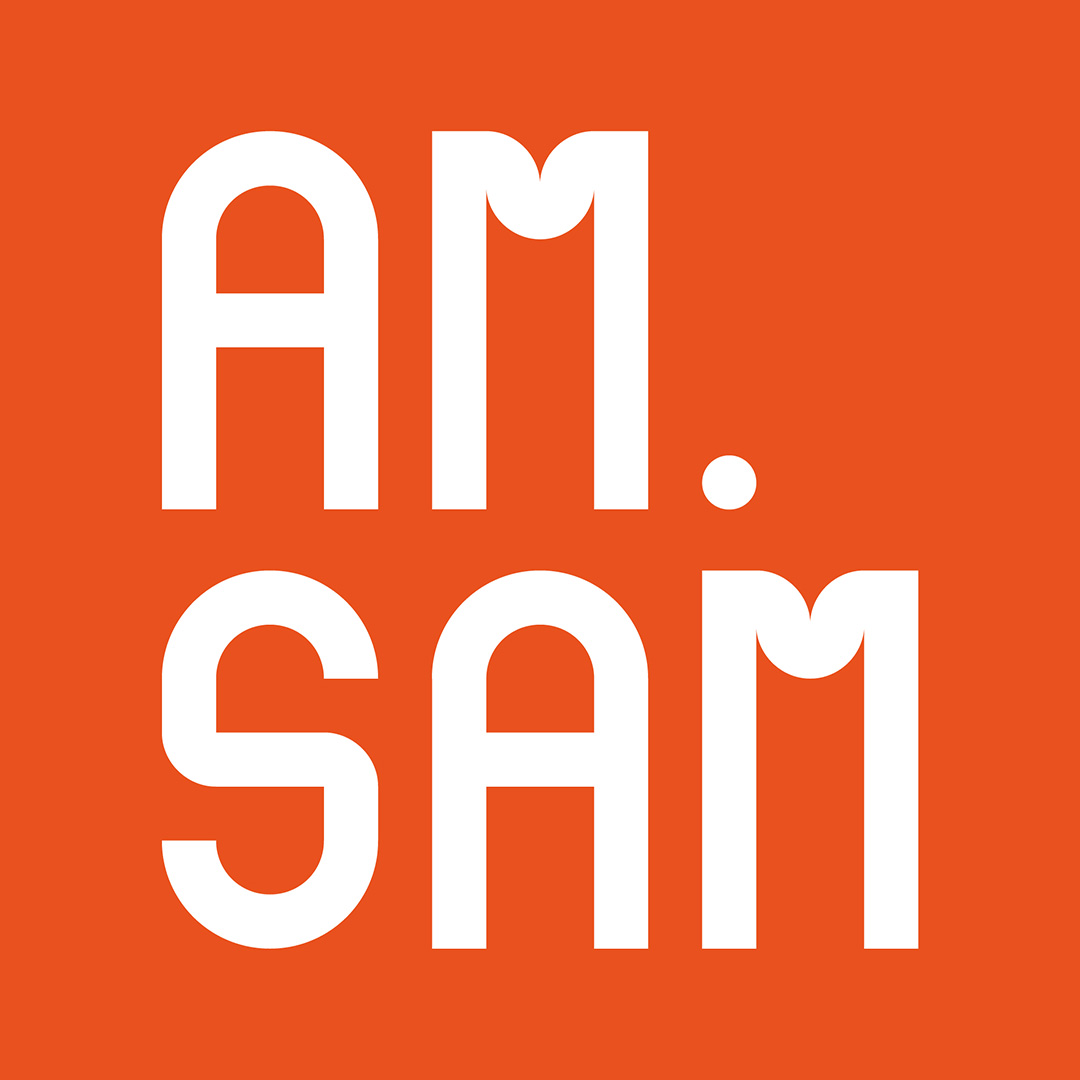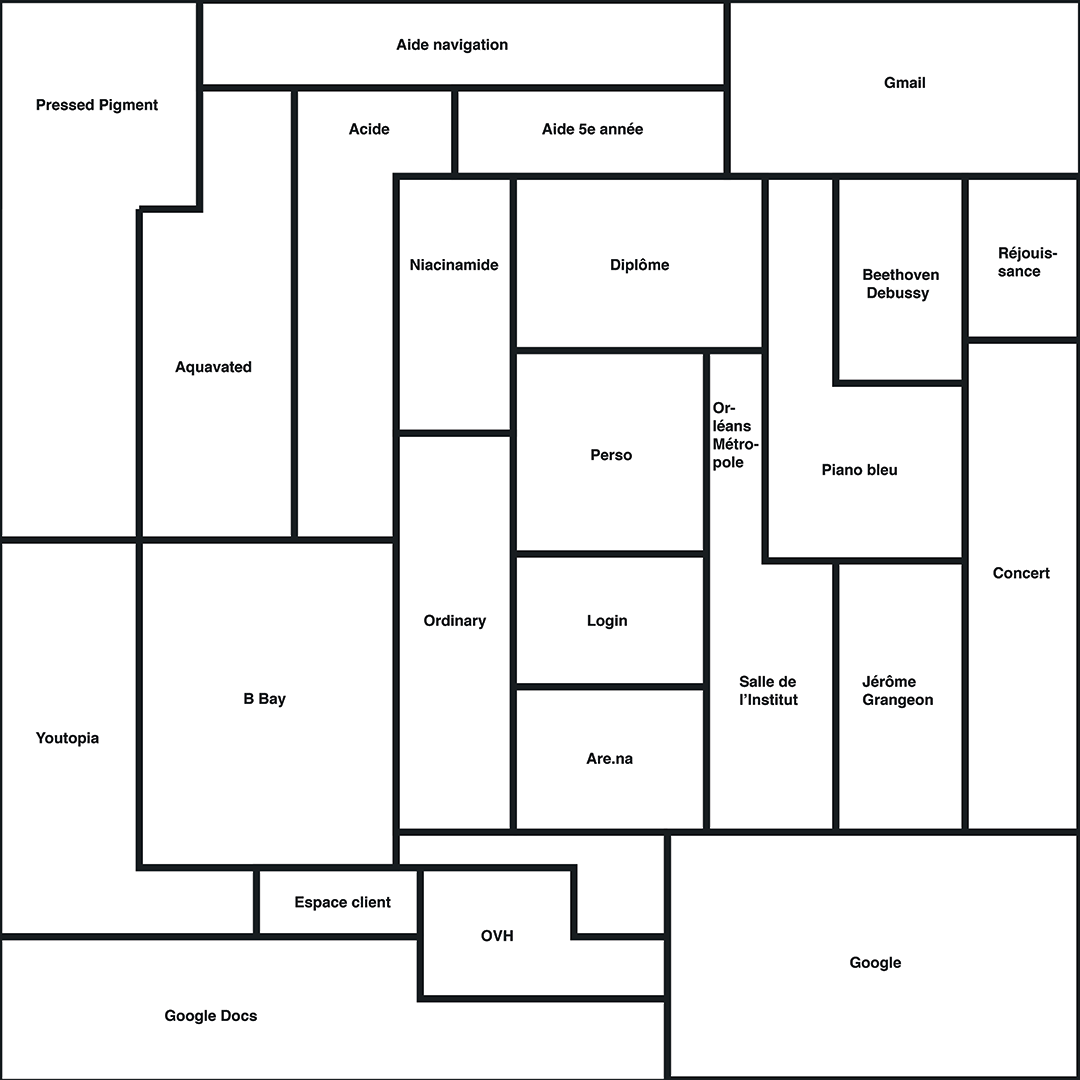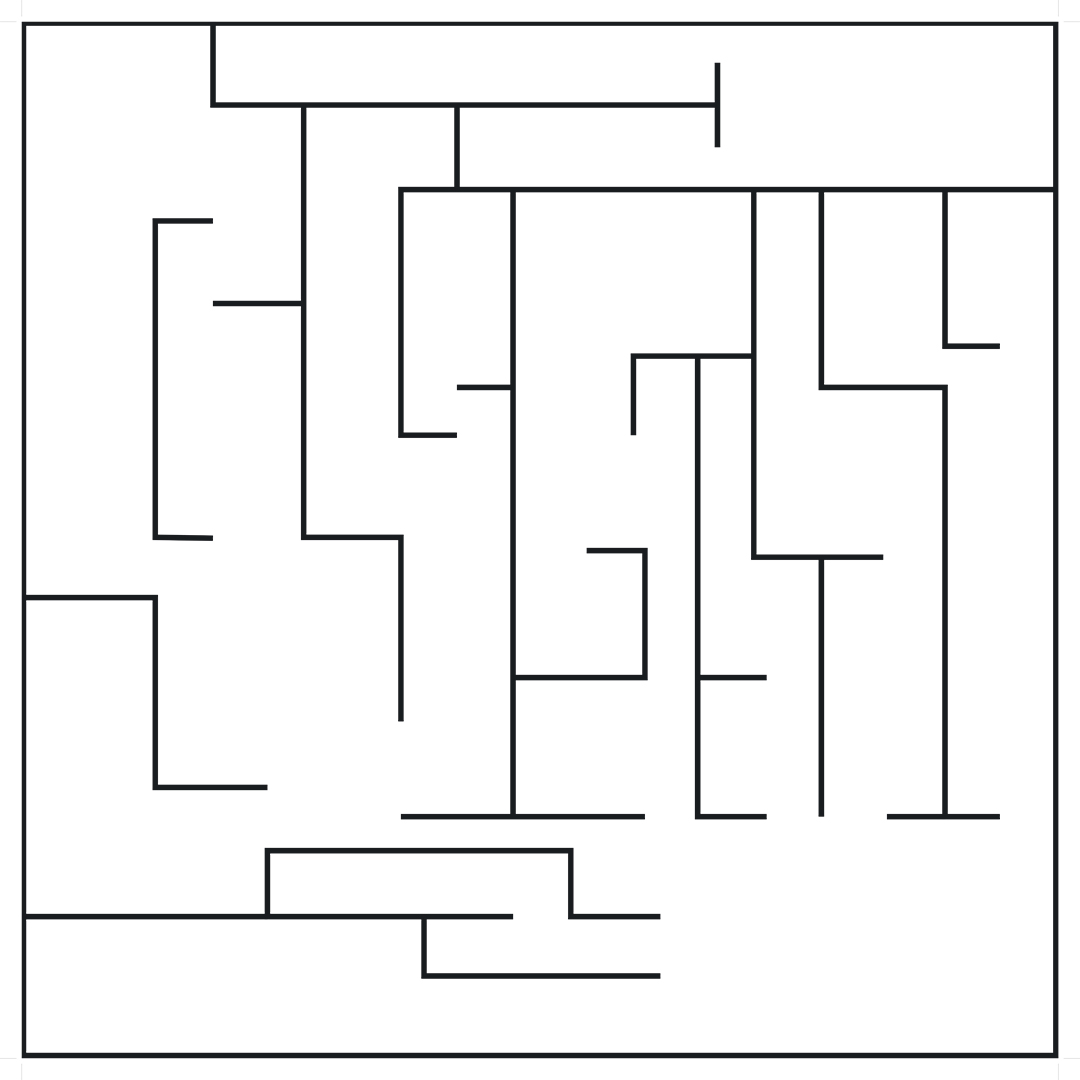
Maze
Title : Maze
Year: 2021
There are several kinds of labyrinth, starting with the mannerist labyrinth, which is definitely the one that has the strongest resonance in the collective mind. A large number of paths, an entrance and an exit (or a centre). It’s the labyrinth that our European minds think of almost instantly, because it’s fed by images of beautiful gardens, video games, newspaper pages… The Mannerist labyrinth has long been studied as a mathematical object, since it responds to a binary rule: true/false, right path/ dead end, and can be modelled in the shape of a decision tree (used to calculate probabilities).
We often associate the Web with another type of labyrinth : the rhizome, or network, a moving structure with no entrance or exit, where each path is potentially the right one. To avoid wasting time, and getting lost, artificial ‘intelligences’ create profiles. Predictive algorithms build the map of our digital lives, our personal mannerist labyrinths. Users navigate their own personalised labyrinth : a tree of mathematical decisions, calculated by predictive algorithms fed by data from the analysis of our behaviour.
How can we not think of the myth of the Minotaur? The labyrinth, custom-built by Daedalus, is not only the monster’s palace or prison, it is also his tomb, where he dies murdered by Theseus. Algorithms provide calculated itineraries, they build our palaces, our prisons, our digital cocoons whose aim is to lighten our wanderings by always providing the right information. Algorithms control potential paths, they define the walls of the labyrinths in which our tracks are accumulated and where we dig in our reflection the sanctuary of our digital death, the landscape of our digital life.
The Maze project proposes a protocol for visualising this maze-like landscape. The first step is to collect the user’s browsing history and construct the resulting decision tree. The decision tree is a mathematical representation of a mannerist labyrinth, which means that a labyrinth can be drawn from it. The paths can then be drawn in ink on the resulting map. The final drawing is used to generate a topography in a 3D design software program. As the layers of ink are layered on top of each other, they become darker and darker, which in the software results in the deepest level. Once the landscape has been generated, you can become the player in a world designed in its own image, stepping into the great back-up of our lives, thanks to an exploration via virtual reality.
